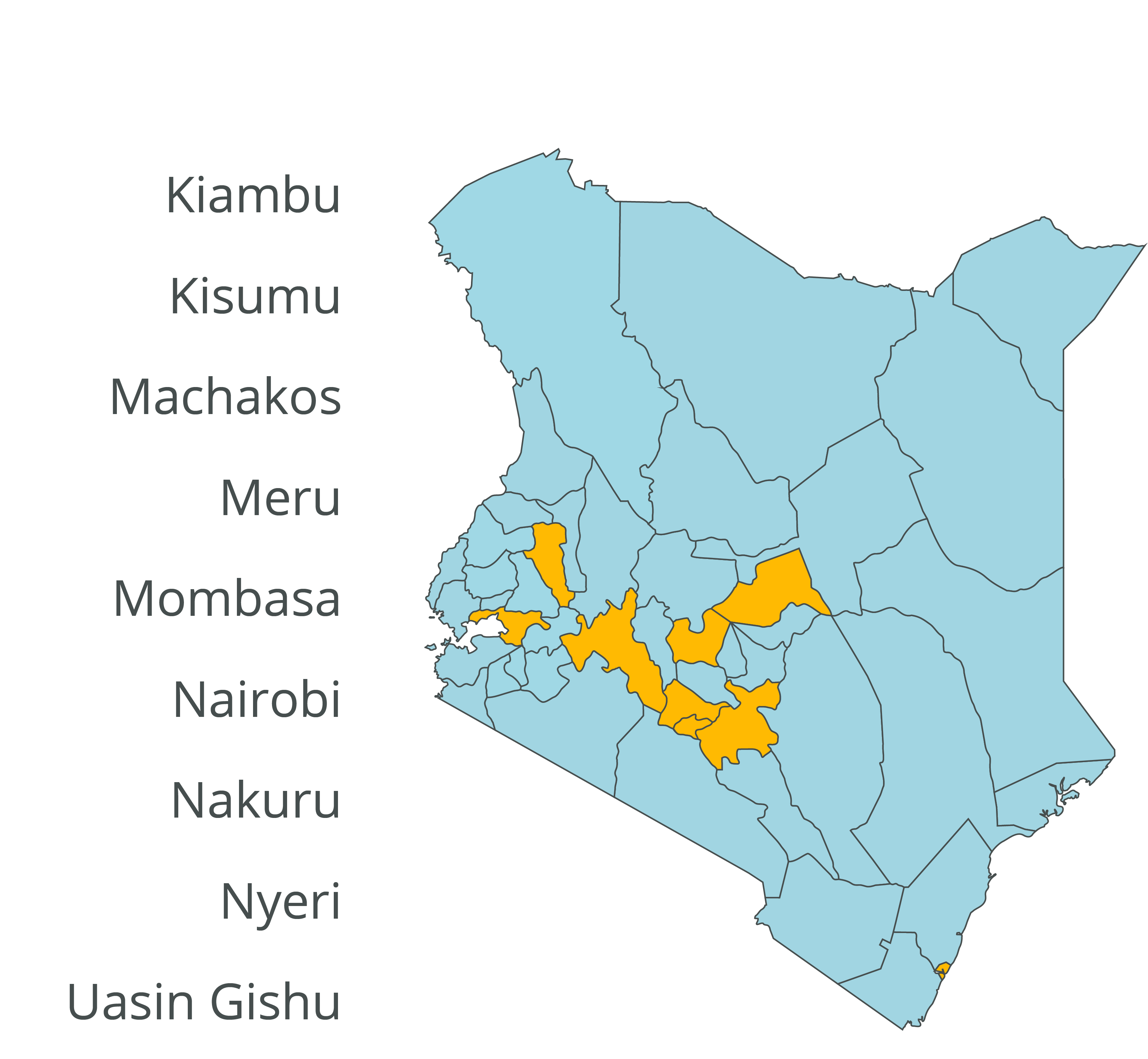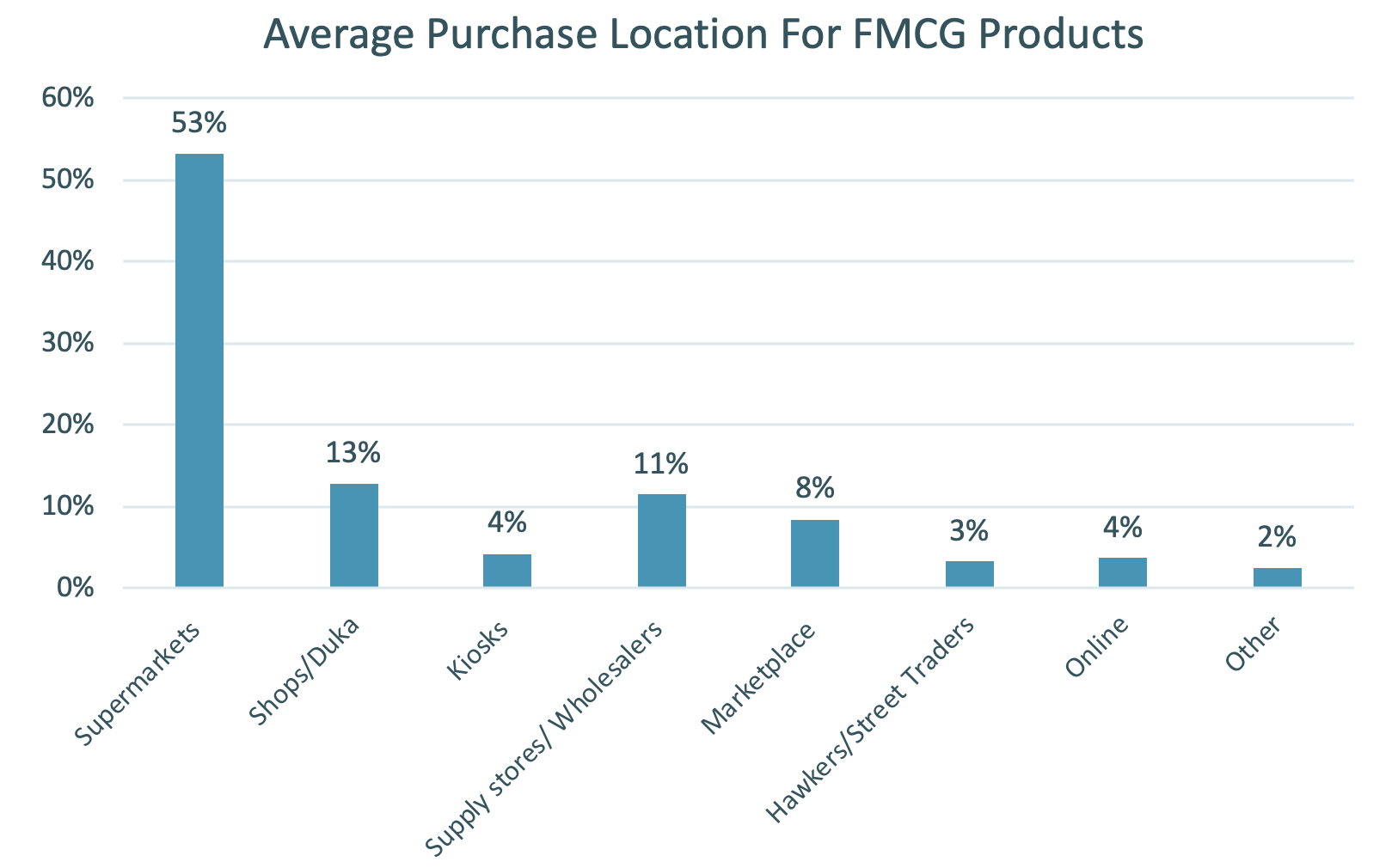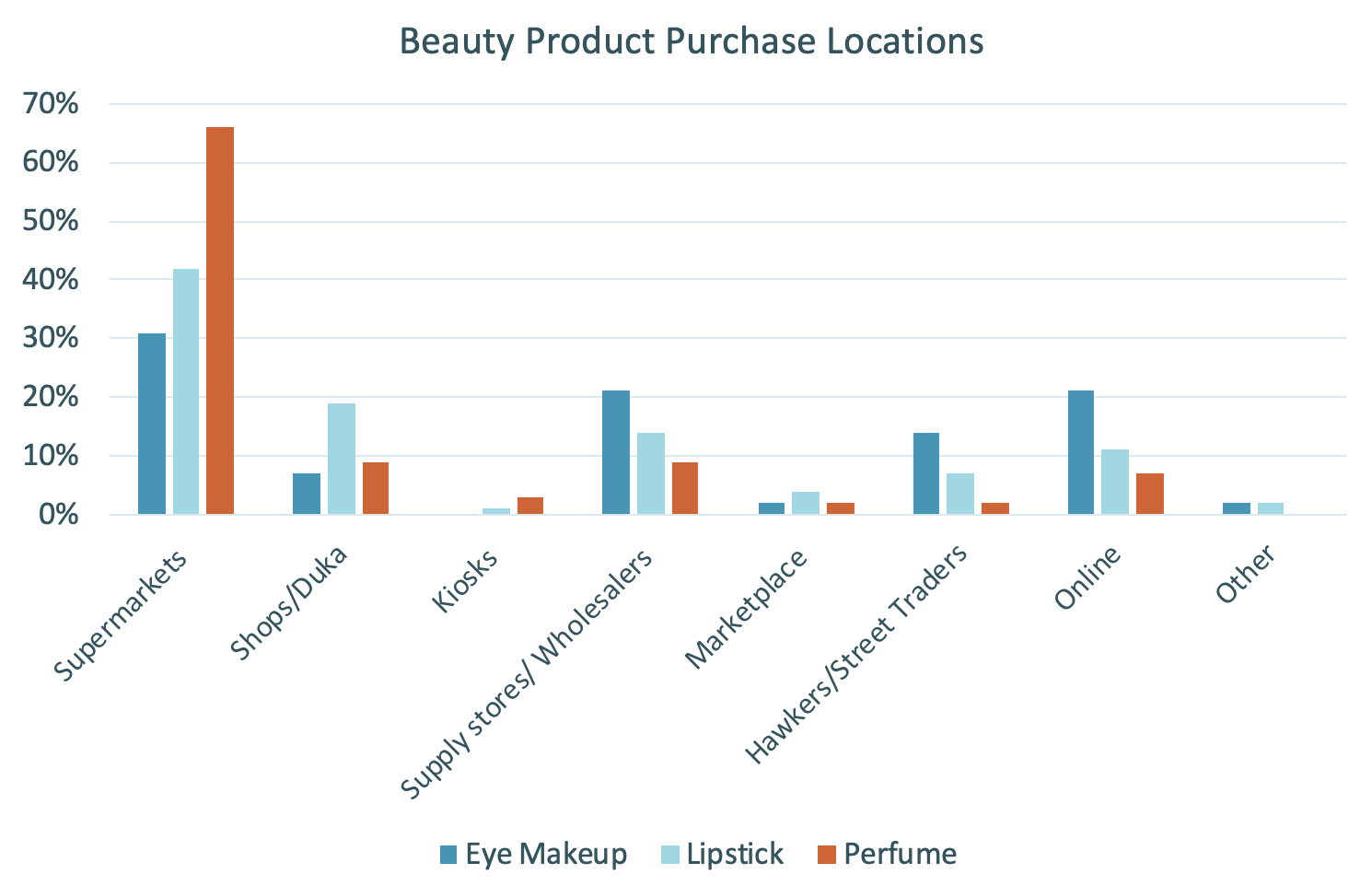As the multinational business community has begun peering in on African markets as a “final frontier” for expansion, an increasing amount of attention has focused on the economy in Kenya. Discussions on the topic often lead to the examination of the formal economy in comparison to the informal economy in the country. With less publicly available data on the informal economy and the rapid changes occurring in Kenya, GeoPoll decided to study just how prevalent informal retailers were for the fast-moving consumer goods sector today. In this report, we will present findings on the popularity of informal retail sales versus formal retail sales for products that people purchase most frequently.
Methodology

Figure 1
This report is a continuation of data analysis from the same study that appears in the FMCG Purchases: Consumer Behavior in Kenya report. This study ran from March 10th through March 16th of 2020 via mobile web. Respondents’ answers represent purchases from the 30 days prior to survey participation. It is important to keep this fact in mind because the results of this study reflect purchasing behavior before COVID-19 related stay-at-home guidelines were released by the Government of Kenya. As the COVID-19 outbreak continues to disrupt spending patterns, this data provides a valuable baseline for FMCG purchases in Kenya.
The 400 total respondents were equally distributed among key urban centers in Kenya that are displayed in Figure 1. Each of these highlighted areas were represented by 11% of the respondent base. There was an equal split between males and females, as well as even split between three age groups: 15-24, 25-34, 35+.
Average Purchase Location for FMCG Products
As a part of this study, GeoPoll examined where FMCG products were purchased within the past 30 days. The focus of this was to determine if an item is more often purchased at retail locations that are considered a part of the formal economy or at locations that are considered part of the informal economy. For the purpose of this report, we will consider formal economy purchases to be from supermarkets and online sources. Informal economy purchases will be from dukas, kiosks, wholesalers, markets, hawkers, and “other”.

Image sources from left to right, top to bottom: The Star, CNN, jbjelloid—Flickr, Peter Gostelow—Flikr, Diamond Wholesalers Ltd. on Facebook, Safari Travel Plus See direct attribution links for images at the bottom of this article.
When the responses across all products were averaged by the indicated purchase location, the majority—57%—of respondents purchased FMCG products through formal retail locations: supermarkets and online. However, certain products and product categories bypass the averages seen across all products from the study. Soap purchases, for example, were mostly made in supermarkets and only a handful were made in dukas and “other” retail locations, while food and beverage purchases were made in various locations.

Purchase Location by FMCG Product Category
Food and Beverage

The variety seen in the purchase location of the food and beverage products starkly contrasts the homogenous nature of supermarket-forward purchase results for most of the other product categories: soap, dental hygiene, hair care, and cleaning products. Although there is more variety seen in the food and beverage category, supermarkets were still a frequent purchase location for many of the items. However, supermarkets were about 30% more popular on average for soap, dental hygiene, hair care and cleaning product purchases than for food and beverage purchases.
Upon a deeper look at the results, there are certain products that have purchase locations that stick out. Soda, for example, is purchased at dukas 16% more than at grocery stores and 33% more than at kiosks, meaning that the majority of soda purchases are occurring in convenient locations like in dukas and kiosks, rather than supermarkets that tend to be more siloed from foot traffic. This is unique even in the beverage category alone, seeing as soda is the only beverage that was purchased more at dukas and kiosks than at supermarkets. For beverage manufacturers, this shows that the majority of the urban Kenyan market for soda retail distribution lives in the informal economy, while other beverage sales (juice, water, liquor, wine, and beer) live more in the formal economy.
As for food products, produce, grains, and beans are more often purchased locally at marketplaces than in supermarkets. The prevalence of produce, grains, and beans in the informal economy is not particularly surprising when the prevalence of smallholder farmers in the area is considered.
Beauty Products

Aside from food and beverages, the other FMCG product category with notable variations in the purchase location was beauty products. Although supermarkets were the most popular purchase location for each of the beauty products, what stood out against all of the other product categories was the high rate of online purchases. An average of only 3% of all of the other FMCG products in this study were purchased online, yet an average of 13% of the products in the beauty product category were purchased online. This may be due to a variety of reasons. For the purpose of this report, however, it is most notable that the beauty products in this study fell into the formal economy more often than the informal economy.
Formal vs. informal economy in Kenya: key takeaways
For the FMCG products included in this study, the majority of purchases on average occurred through formal retail avenues. The informal retail space was most notably seen for soda purchases and natural foods like produce, grains, and beans.
To conduct further research on this topic or one similar, contact us today to learn more about GeoPoll’s capabilities.
Image attribution
Hawker left, hawker right , kiosk , duka , wholesaler, image of a market



